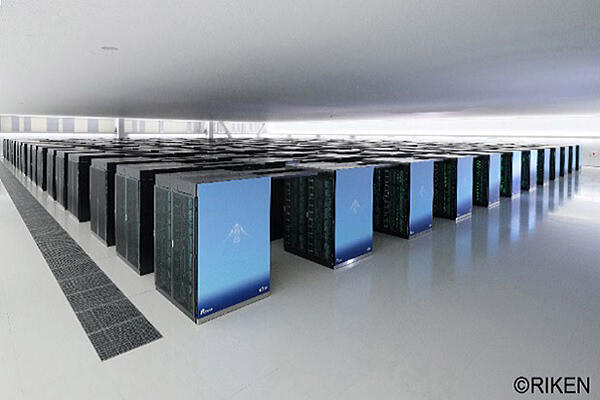RIKEN has started development of a successor for its current Fugaku supercomputer. It has the codename "Fugaku NEXT" during the development stage and is expected to become operational in 2030. RIKEN aims to increase the effective performance in simulations by 5 to 10 times. Furthermore, as the use of AI is rapidly increasing, it aims to achieve the world's highest level of performance as required for AI. The goal is to create a computational infrastructure that will enable Japan to lead the world in science, technology, and innovation. This will be done by meeting the growing demand for computational resources and using them in "AI for Science." This will accelerate scientific research.

Provided by RIKEN
Last year in June, an expert committee of the Ministry of Education, Culture, Sports, Science and Technology (MEXT) issued the "Report on Next-Generation Computing Infrastructure." The Report stated that RIKEN was the main agency to develop Fugaku NEXT because of its experience in the development and operation of Fugaku and the previous generation "K" computer. The required performance and functions of Fugaku NEXT include: (1) introduction of graphics processing units (GPUs) to accelerate calculations; (2) significant improvement in power performance; (3) achievement of an effective performance in simulations 5 to 10 times better than Fugaku's; and (4) world's highest level of effective performance as required for AI learning and inference.
Based on this policy, on the 22nd of January, RIKEN announced that it will begin development of Fugaku NEXT. The program was originally planned to begin in next fiscal year. It was preponed due to this year's comprehensive economic stimulus measures and supplementary budget. The development cost has not yet been determined, and a company will be chosen to jointly conduct the basic design. A core organization for development will be established at the RIKEN Center for Computational Science (Kobe City). The "Next-Generation Computing Infrastructure Development Division" will collaborate with domestic and overseas research institutions.
The current Fugaku was jointly developed by RIKEN and Fujitsu. It was installed at the site of the K computer, which operated at the Center from September 2012 to August 2019. After a trial period beginning April 2020, it became fully operational in March 2021. Fugaku is being used in open calls for proposals and important national projects. It is also being used in MEXT's "Program for Promoting Research on the Supercomputer Fugaku." In June 2020, Fugaku became the first Japanese computer in eight and a half years to top the TOP500. This is the world ranking for supercomputer calculation speed. It won the top spot for four consecutive times, until November 2021. Although Fugaku slipped to 6th place in the rankings last November, it is still demonstrating strengths in practical applications. It has won first place 10 consecutive times in the two indicators of industrial use and graph analysis.
Fugaku NEXT will be developed so that it can be used by industry, academia, and government in various fields and allows for the use of existing applications. Efforts will also be made to link a "quantum computer," which performs calculations based on quantum mechanics, with a conventional supercomputer. In the development process, RIKEN will use domestically produced technologies to strengthen industrial competitiveness and human-resource development. It will also collaborate internationally as necessary.
After the shutdown of the K computer, Japan experienced a "fallow period" until Fugaku came online. The country had reduced computational resources for about one and a half years. During this period, supercomputers from universities and other research institutions were used to meet demand. This time, RIKEN is considering various measures to minimize the off-cycle period during the transition from Fugaku to Fugaku NEXT, including those addressing the installation site. These measures are needed because supercomputers are widely used and Fugaku's role is growing.
Professor Masaaki Kondo of Keio University's Faculty of Science and Technology (team leader for Next Generation High-Performance Architecture Research at the RIKEN Center for Computational Science) will become head of the Next-Generation Computing Infrastructure Development Division. He stated, "We aren't aiming to be number one in any particular index (such as the TOP500). Our strongest desire is to create a system that is application-first and can produce scientific results. We want to create something that's easy to use and helps achieve the best performance. We especially want a system that can easily integrate AI and simulation."
Original article was provided by the Science Portal and has been translated by Science Japan.




